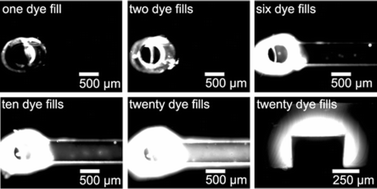PDMS absorption of small molecules and consequences in microfluidic applications
Abstract
Microfluidic devices made out of polydimethylsiloxane (PDMS) have many physical properties that are useful for cell culture applications, such as transparency and gas permeability. Another distinct characteristic of PDMS is its ability to absorb hydrophobic small molecules. Partitioning of molecules into PDMS can significantly change solution concentrations and could potentially alter experimental outcomes. Herein we discuss PDMS absorption and its potential impact on microfluidic experiments.


 Please wait while we load your content...
Please wait while we load your content...